DM has another video up.
This one is a simulation of piloting of an ET spacecraft.
Please enjoy.
Utilising Advanced OBE Techniques to Hijack and Pilot ET Spacecraft Part 1 – YouTube
DM has another video up.
This one is a simulation of piloting of an ET spacecraft.
Please enjoy.
Utilising Advanced OBE Techniques to Hijack and Pilot ET Spacecraft Part 1 – YouTube
Naval Aviation is a small club. As it should be. Here’s a great write up of the experiences of Paco and his experiences with the A-6 Intruder.
This guy flew “shake n’ bakes” in pursuit of “crispy critters”. Or at least that’s what we used to call it decades ago… “in the day”…
It's a great read. All credit to him for his autobiography, note that this was edited to fit this venue. The original article was found on The War Zone.
What do you know? Hell finally froze over, well… maybe started to get a little slushy, maybe. I thought it would never happen. But it seems that a slow but cautious opening up of admittance is a start. No, of course they aren’t admitting the active studies, the contacts, the programs, and all that. That is never going to happen. But, at least they are starting to acknowledge that someone or something appears to have some extremely advanced technology. And it is the Pentagon, and not the CIA, that is actively changing the nature of the conversation about it.
Finally, after decades of public denials, and public cover-ups, the Navy finally admits that there are vehicles and objects that possess technologies far, far advanced than what we are capable of having.
I’m sure that there are “officials” that are livid about this.
The sightings of strange activity in the Ann Arbor region of Michigan in March 1966 is perhaps more famous for the rather outlandish, but official explanation issued for it – that the sightings were down to “swamp gas”. It was an explanation that the witnesses would reject outright. As would the vast majority of UFO researchers who examined the case over the decades since. - Michigan, 1966 – The “Swamp Gas” Incidents
Date: November 14, 2004; Location: Pacific Ocean
Jack Sarfatti writes, The USS Nimitz UFO incident refers to a 2004 Radar-Visual encounter of an unidentified flying object by US fighter pilots of the Nimitz Carrier Strike Group. In December 2017, infrared footage of the encounter was released to the public. Prior to the December 2017 incident, early November 2004, the Ticonderoga-class guided missile cruiser USS Princeton, part of Carrier Strike Group 11, had been tracking mysterious aircraft intermittently for two weeks on an advanced AN/SPY-1B passive radar.
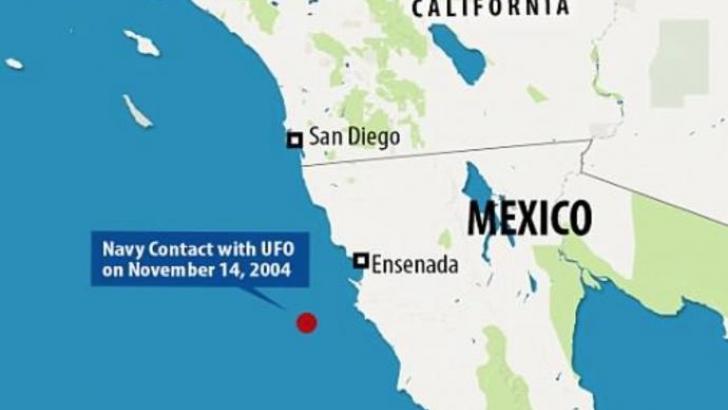
When the same event occurred again around 12:30 EST on 14 November 2004, an operations officer aboard Princeton contacted two airborne US Navy jet fighters from USS Nimitz. The first fighter aircraft was piloted by Commander David Fravor, commanding officer of Strike Fighter Squadron 41, assisted by his weapon systems officer (WSO) in the back seat. Lieutenant commander Jim Slaight was aboard the second jet which was serving in the role as a wingman. The officers were training aboard two FA-18F Super Hornets in a routine combat exercise.
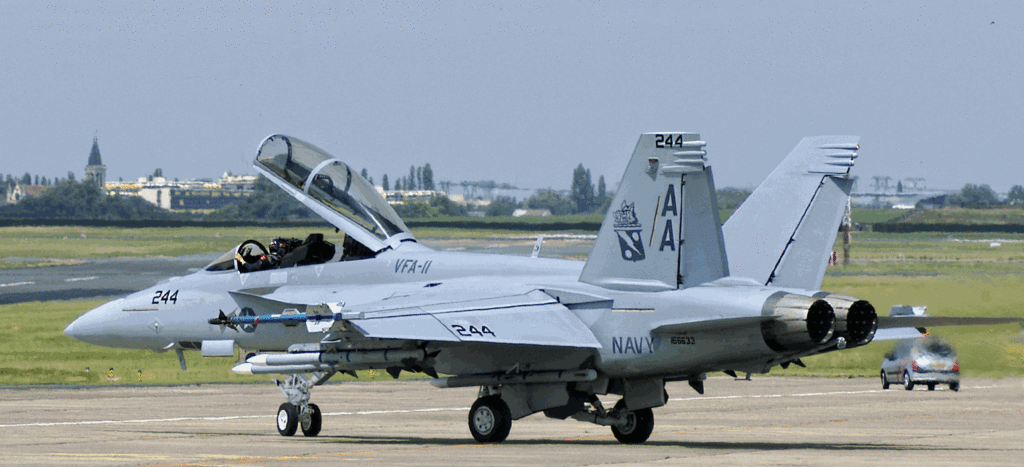
Princeton’s radio operator first asked the AWACS of the Carrier Airborne Early Warning Squadron 117, which was assisting the two F-18s to guide them to intercept the unknown aircraft. Princeton’s radio operator directly instructed the pilots to change their course and investigate and asked if they were carrying operational weapons; they replied that they were not.
The weather conditions for that day showed excellent visibility. When the jet fighters arrived on site, the crew of four saw nothing in the air nor on their radar.
Looking down at the sea, however, they noticed a turbulent oval area of churning water with foam and frothy waves “the size of a Boeing 737 airplane” with a smoother area of lighter color at the center, as if the waves were breaking over something just under the surface.
A few seconds later, they noticed an unusual object hovering with erratic movements 50 feet above the boiling water. Both Fravor and Slaight later described the object as a large bright white Tic Tac 30 to 46 feet (10 to 14 meters) long, with no windshield nor porthole, no wing nor empennage, and no visible engine nor exhaust plume. According to Fravor “I have no idea what I saw. It had no plumes, wings or rotors and outran our F-18s. But I want to fly one”.
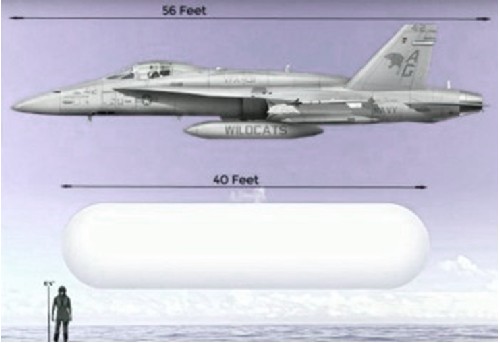
Fravor began a circular descent to approach the object, but he claimed the UFO was intentionally avoiding any short-range dogfight radar lock-on with “impossible” maneuvers [not in citation given] that made engagement difficult. As Fravor got closer descending, he reported that the object began ascending along a curved path, maintaining some distance from the F-18, mirroring its trajectory in opposite circles.
Fravor then made a more aggressive maneuver, plunging his fighter to aim below the object, but at this point the UFO accelerated and went out of sight in less than two seconds, leaving the pilots “pretty weirded out”.
Subsequently, the two fighter jets began a new course to the combat air patrol rendezvous point. “Within seconds” the Princeton radioed the jets that the radar spot had reappeared 60 miles away at the CAP point indicating a speed of 2,400 miles an hour to cover the distance in the reported time. The jets went to investigate the new radar location, but “by the time the Super Hornets arrived […] the object had already disappeared.” Both F-18s then returned to Nimitz.
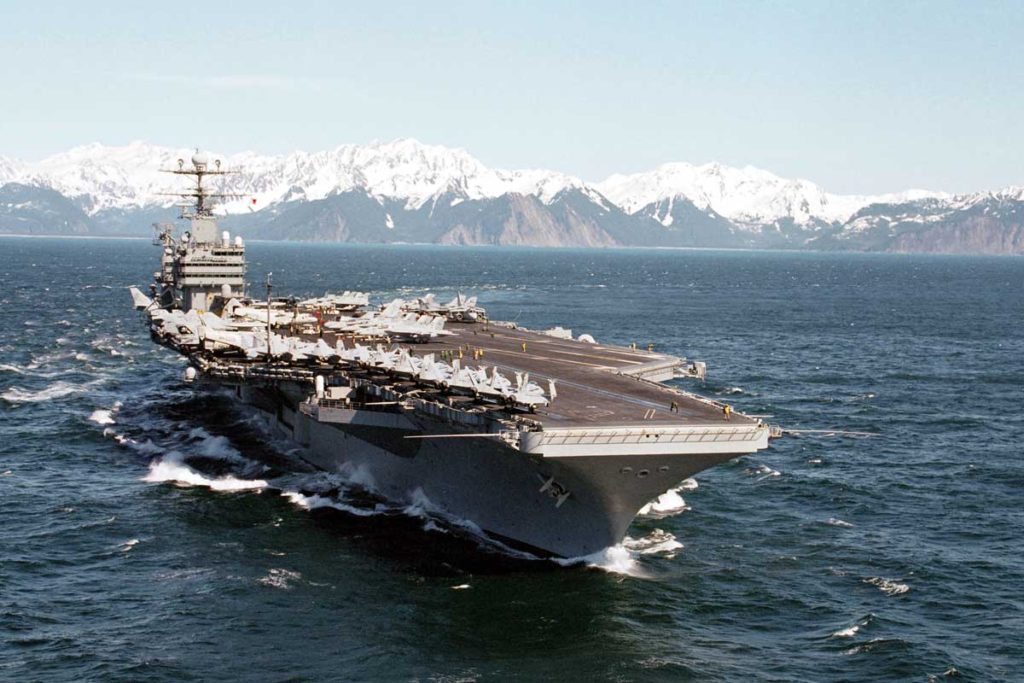
A second team took off at 15:00 EST, this time equipped with an advanced infrared camera (FLIR pod). This camera recorded an evasive unidentified aerial system on video, publicly released by the Pentagon on 16 December 2017 alongside the revelation of the funding of the Advanced Aviation Threat Identification
This footage is known as the 2004 USS Nimitz FLIR1 video. It officially shed some light on a decade-old story that was largely unknown, except for a 2015 second-hand story on FighterSweep.com that, in spite of providing a lot of details, remained unconfirmed at that time.
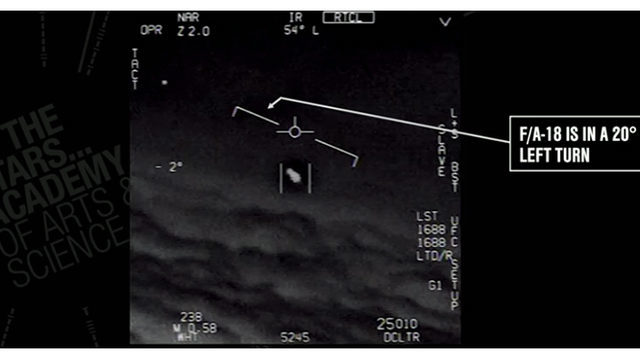
A second infrared footage, known as the GIMBAL video, has been released by the Pentagon alongside the 2004 FLIR1 footage. Although the media often present the two videos together to illustrate the 2004 USS Nimitz UFO incident, the GIMBAL video is unrelated, filmed at the East Coast of the United States at an unknown date.”
The U.S. Navy has confirmed that three F-18 gun-camera videos first released by The New York Times and a UFO research organization show “unidentified aerial phenomena.”.
The term “unidentified aerial phenomena.” or UAPs is a more formal term for UFOs that doesn’t have all that little-green-men baggage.
The Times originally released two of the videos in a December 2017 article. The article revealed that the Pentagon had operated a secret UFO investigatory project, called the Advanced Aerospace Threat Identification Program (AATIP).
All three videos were published on the website of To the Stars Academy of Arts and Sciences, a UFO research organization founded by former Blink-182 singer and guitarist Tom DeLonge.
The news that the Navy considers the three videos, unofficially known as “FLIR1,” “Gimbal” and “GoFast”, first appeared on The Black Vault. The Black Vault is a web site that specializes in declassified government documents.
“FLIR1” is from November 14, 2004, and “Gimbal” and “GoFast” are from January 21, 2015.
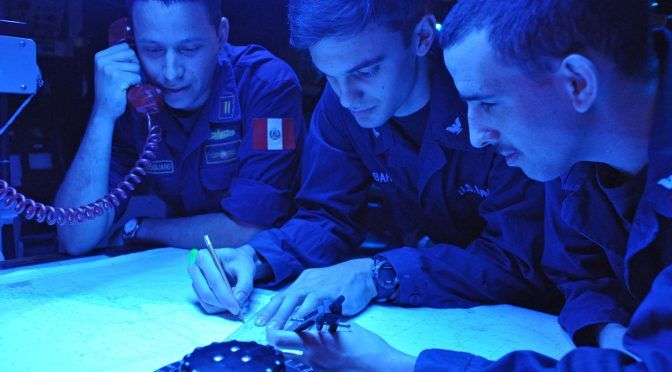
Joseph Gradisher, official spokesperson for the deputy chief of naval operations for information warfare, emphasized that these videos represent only some of the many UAP sightings the Navy is investigating.
“Those three videos are just part of a larger effort by the U.S. Navy to try and investigate a series of incursions into our training ranges by phenomena that we’re calling unidentified aerial phenomena,” says Gradisher, who declined to say how many sightings there have been. “Our aviators train as they fight. So when they’re out there training, if there’s an incursion by any kind of aerial vehicle phenomena, whatever, it puts the safety of our aviators at risk as well as the security of our training operations.”
Here are some links related to this subject matter. The United States Navy is openly admitting that they have witnessed, observed and tracked unknown vehicles with amazing behaviors that they cannot understand which defy the known laws of physics.
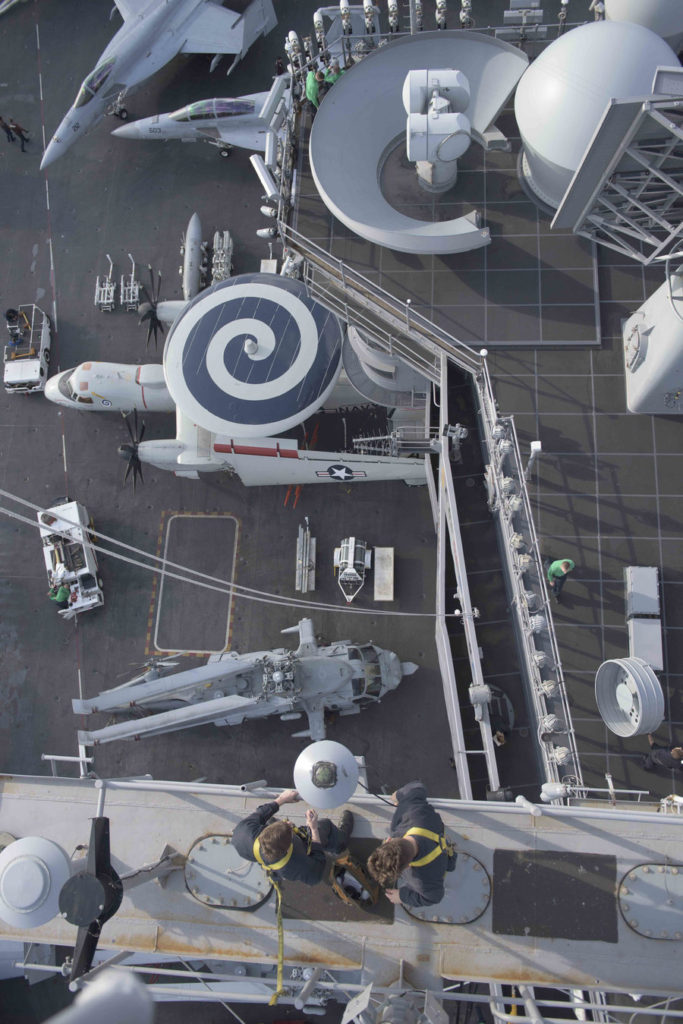
Few stories have garnered more requests for elaboration than the recent news that the Navy has decided to very publicly change its UFO / USO reporting rules and procedures.
Why? People ask?
Everyone has their opinions. As do I. And, yes, there have been wildly varying takes on all of this.
Finally, after decades of public denials, and public cover-ups, the Navy finally admits that there are vehicles and objects that possess technologies far, far advanced than what we are capable of having.
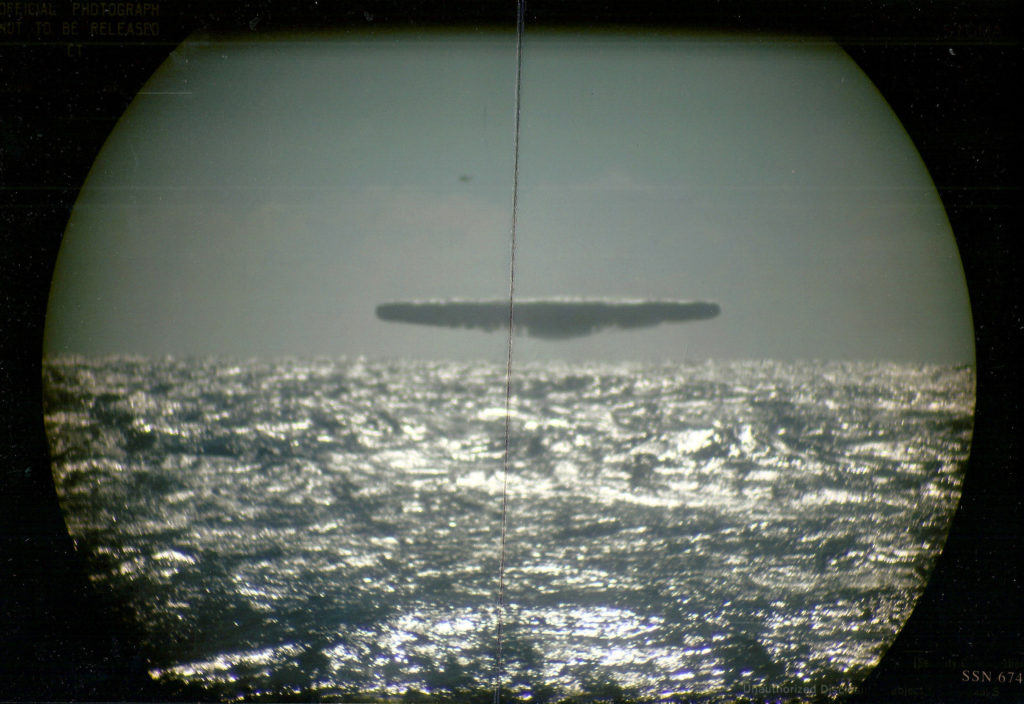
Politico was first to report on the Navy’s new directions for reporting unexplained objects operating in the same environment as its vessels and aircraft.
Politico’s Bryan Bender writes:
"There have been a number of reports of unauthorized and/or unidentified aircraft entering various military-controlled ranges and designated air space in recent years," the Navy said in a statement in response to questions from POLITICO. "For safety and security concerns, the Navy and the [U.S. Air Force] takes these reports very seriously and investigates each and every report." "As part of this effort," it added, "the Navy is updating and formalizing the process by which reports of any such suspected incursions can be made to the cognizant authorities. A new message to the fleet that will detail the steps for reporting is in draft."
To be clear, the Navy isn’t endorsing the idea that its sailors have encountered alien spacecraft. No, that will open up an entire keg of worms. Truthfully, it’s not admitting to anything other than the fact that the Navy has observed and recorded strange objects in the skies and in the waters of the world.
It’s a Duh! moment, for certain.
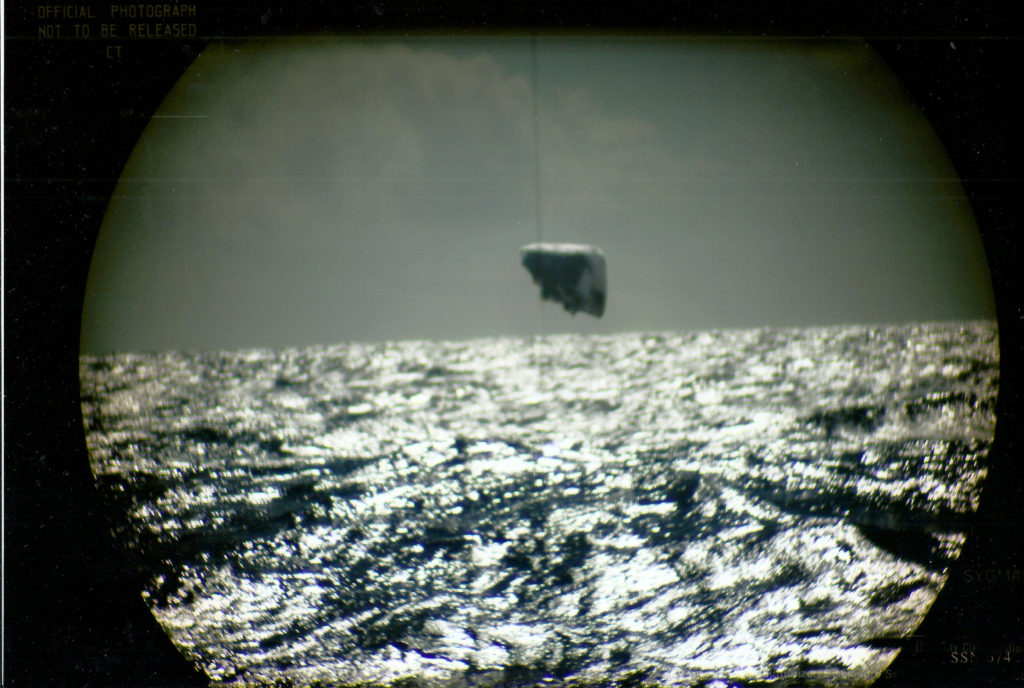
However, there is an entire army of CIA paid debunkers, and a branch of MAJestic that has been devoted to obscuring, covering up, and ridiculing anyone who even vocalizes that strange objects have materialized and disappeared in and around our planet that defy conventional explanations.
So, in a way, it’s a kind of vindication.
I and others have told our stories about MAJestic and the involvement of the US Navy in it. We have been ridiculed and laughed at, and even though this latest posturing is a long, long way off from the actual reality. It is a start.
It is a start.
For what ever it’s worth; been enough strange aerial sightings by credible and highly trained military personnel that they need to be recorded in the official record and studied. Yes, rather than dismissed as some kooky phenomena from the realm of science-fiction.
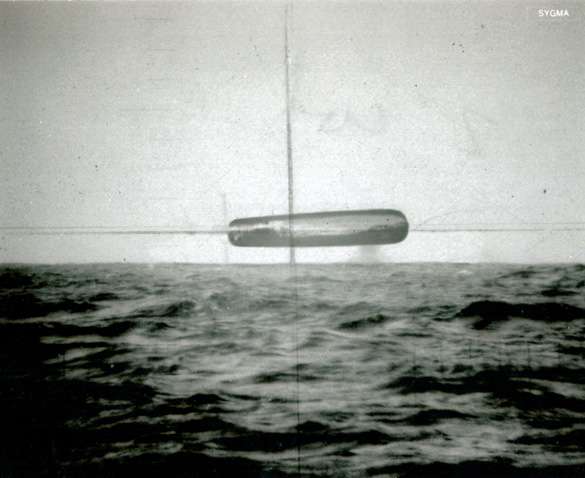
The Washington Post did their own follow-up to Politico’s story, stating:
Recently, unidentified aircraft have entered military-designated airspace as often as multiple times per month, Joseph Gradisher, spokesman for office of the deputy chief of naval operations for information warfare, told The Washington Post on Wednesday. Citing safety and security concerns, Gradisher vowed to “investigate each and every report.” He said, “We want to get to the bottom of this. We need to determine who’s doing it, where it’s coming from and what their intent is. We need to try to find ways to prevent it from happening again.”
As if.
But, like I said, it’s a start.

Now, you all have to realize that there is no real way to distinctly classify something like a UFO or USO without the creation of controversy. And controversy in the Navy can be a career limiting move.
Controversy in the Navy can be a career limiting move.
The moment you report something like this, the ONI and MAJestic takes control. Any investigation outside those channels are squelched and suppressed.
Like these links discuss…
This new reality has led to much speculation.
Of course, and as such we can naturally conclude that the military knows far more about these strange happenings than they are willing to let on. It’s not like suddenly out of the blue they started, just now, to observe and record these sightings. Do not be silly.
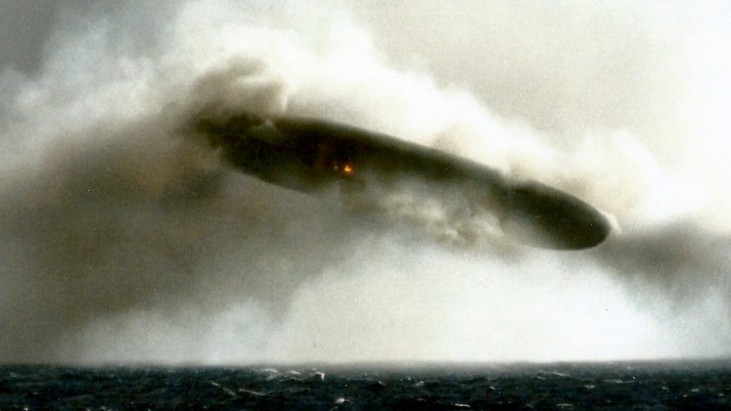
Otherwise, why wouldn’t they want to know more about intruders wielding fantastic technology that makes them impervious to existing countermeasures and defenses?
Now all this appears to be changing. Why?
The fact is that we actually know that in the last 15 years, under at least some circumstances, the military has wanted certain high-fidelity data related to encounters with UFOs.
The most compelling encounter of recent, at least that we know of, occurred in and around where the Nimitz Carrier Strike Group was operating during workups to deployment in 2004.
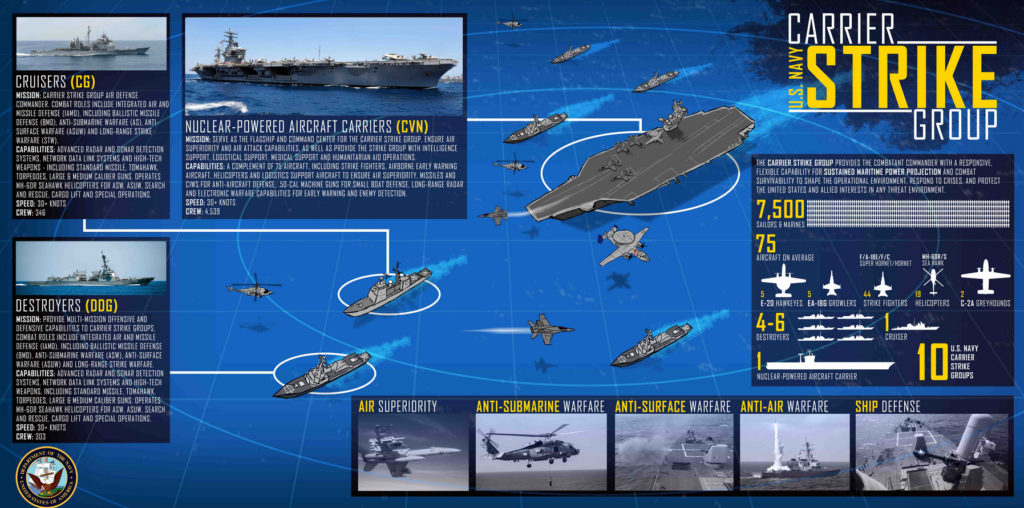
This encounter is known as the “Tic Tac Incident”.
The incident, or really the series of incidents as they occurred over a number of days, have become near legendary in nature as the witnesses involved are highly credible in nature and numerous.
In addition, we have official reports detailing the incident that convey a very compelling story, as well as hours of testimony from those who were there—a group of sailors and naval aviators that seems to be emerging more and more out of the shadows with each passing day.

To examine all public evidence available, it becomes clear that [1] someone has some amazing technology, [2] modern technology is recording it all over the world, and [3] it didn’t just start happening…
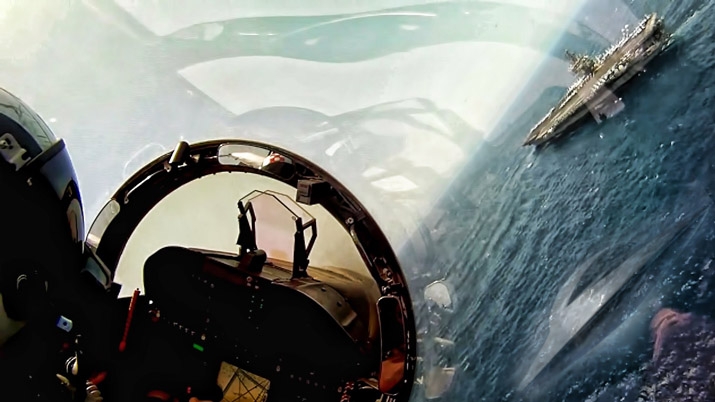
And since it didn’t just start happening, then the Navy knows more about all this than they will ever admit. The classification is MAJestic.

No matter how you look at it, the “Tic Tac” incident that involved the Nimitz Carrier Strike Group off the Baja Peninsula in 2004, implies some pretty mind blowing conclusions.
The main revelation is that technology exists that is capable of performing flying maneuvers that shatter our perceptions of … well, everything.
Everything.
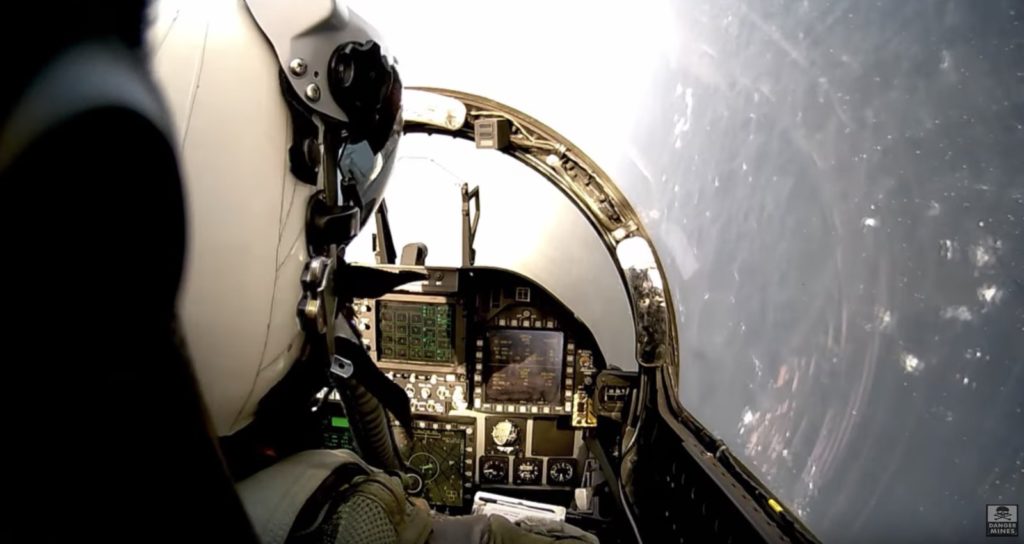
This includes propulsion, flight controls, material science, and our basic ideas of physics. So many things that we thought were so fixed, unchangeable and fundamental to our universe are just wrong.

Let me underline this again for you, the Nimitz encounter with the Tic Tac proved that exotic technology that is widely thought of as the domain of science fiction actually exists.
It is real.
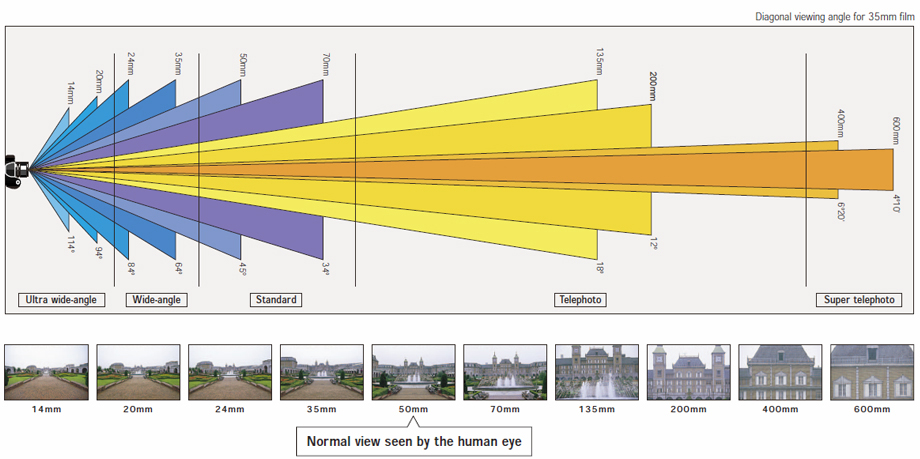
It isn’t the result of altered perception, someone’s lucid dream, a stray weather balloon, or swamp gas.
There has been speculation as to where Allen Hynek, scientific consultant for Project Blue Book, came up with the possible explanation of swamp or marsh gas as to what was seen on successive nights in Dexter and Hillsdale, Michigan, (March 20, 21, 1966).
Some reports suggest Hynek got the idea from a University of Michigan botany professor or that Hynek became informed about the phenomenon through reading. However, in my research for an article titled "Swamp Gas Revisited", published in the February, 2004, issue of UFO Magazine (UK), a much different explanation was revealed to me.
In interviewing Washtenaw County Sheriff Doug Harvey for the article, the former Sheriff explained how he had taken Hynek to the Frank Mannor farm near Dexter for some on site investigation. The sheriff described how Hynek interviewed witnesses and sloshed around in the swamp for a time in an attempt to determine what the many witnesses had seen a few nights earlier. The Sheriff then brought Hynek back to the Sheriff's headquarters located in Ann Arbor.
According to Harvey, they talked for a time about the sighting and Hynek admitted he didn't know what the witnesses had seen on the Mannor farm. "That's when the phone call came in," Harvey told me.
"What phone call I asked?"
Harvey said, "it was a call for Hynek and it was from Washington."
"How did you know it was from Washington," I replied.
"Because the dispatcher stepped into the office and said, 'Dr. Hynek, you've got a call from Washington.'"
Harvey told me that Hynek stepped out of the office to take the call and then returned in a few minutes looking a bit perplexed. And then, according to the sheriff, Hynek said, "it's swamp gas they saw, swamp gas."
It was a short time later that Hynek held the infamous press conference at the Detroit Press Club and suggested that a possible explanation for the recent sightings might have been marsh or swamp gas. The explanation became a front page story the next day in papers across the country and Hynek became the butt of jokes and cartoons. He was ridiculed to such an extent that Michigan Congressman Gerald Ford (later President Ford) asked for a Congressional investigation. It was one of Hynek's worst moments.
The important thing here is that if the Washington phone call actually took place, and I believe it did, then Hynek was receiving direction from a high government source. The whole thing smells of more UFO governmental coverup.
- The origin of Dr. Hynek's "Swamp Gas" explanation
Someone or something has crossed the technological Rubicon and has obtained what some would call the Holy Grail of aerospace engineering. And now the Navy is throwing up it’s hands, and letting the rest of the world (a little bit) in on it’s big secret…
…it’s not swamp gas.

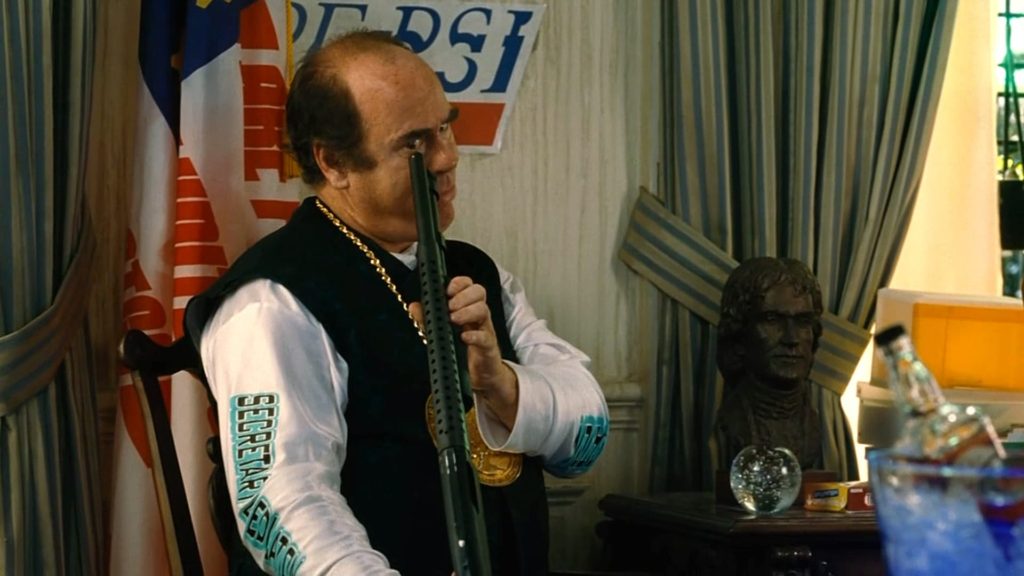
There is always an out for some in the form of claiming an odd impromptu conspiracy. Or alternatively, some hollow explanation that doesn’t pass muster beyond the first paragraph. Yet, seriously, in the end, it actually happened.
Some people are so caught up in their belief system that they are unable to reason at any sort of cognitive level. Consider the skeptics... A UFO can land on network television, within a football stadium with hundreds of onlookers. The hatch can open up, and everyone in the stadium, and all the news-media would record the event on their cameras. An extraterrestrial can get out, bow to the camera, and dance a tango with the star quarterback. All the skeptics would report would be that swamp gas affected a nation-wide bout of insanity.
As uncomfortable as that fact is, it’s reality.
![It was simply hanging in midair. He [the WSO] switched to the TV mode and was able to again lock the FLIR onto the object while still trying, with no luck, to get a STT track on the radar. As he watched it, the AAV moved out of his screen to the left so suddenly it almost seemed to disappear. On the tape, when it is slowed down, the object accelerates out of the field of view with shocking speed. The WSO was not able to reacquire the AAV either in RWS or with the FLIR.](https://metallicman.com/wp-content/uploads/2019/11/navy-tic-tac-observed-1024x577.jpg)
So, we need to use this event as a precious insight going forward when it comes to evaluating and contemplating what is possible and where truth actually lies.
Because, I’ll tell you what, the general public hasn’t a clue.

What many may not know about this event is that it occurred in a place and time where the most powerful set of aerial surveillance sensors ever created were amassed together and were watching and recording it all.
This entire encounter was not captured on a cell phone. It was captured with an array of the most advanced electronic and sensing equipment known to man.

And it is the recording part that is maybe the most interesting facet of the Nimitz encounters that has largely been passed over in terms of significance and notoriety.
What most don’t realize is that the Nimitz Carrier Strike Group wasn’t just equipped with some of the most advanced sensors the world had to offer, but that it also had hands-down the most advanced networking and computer processing capability of any such system.
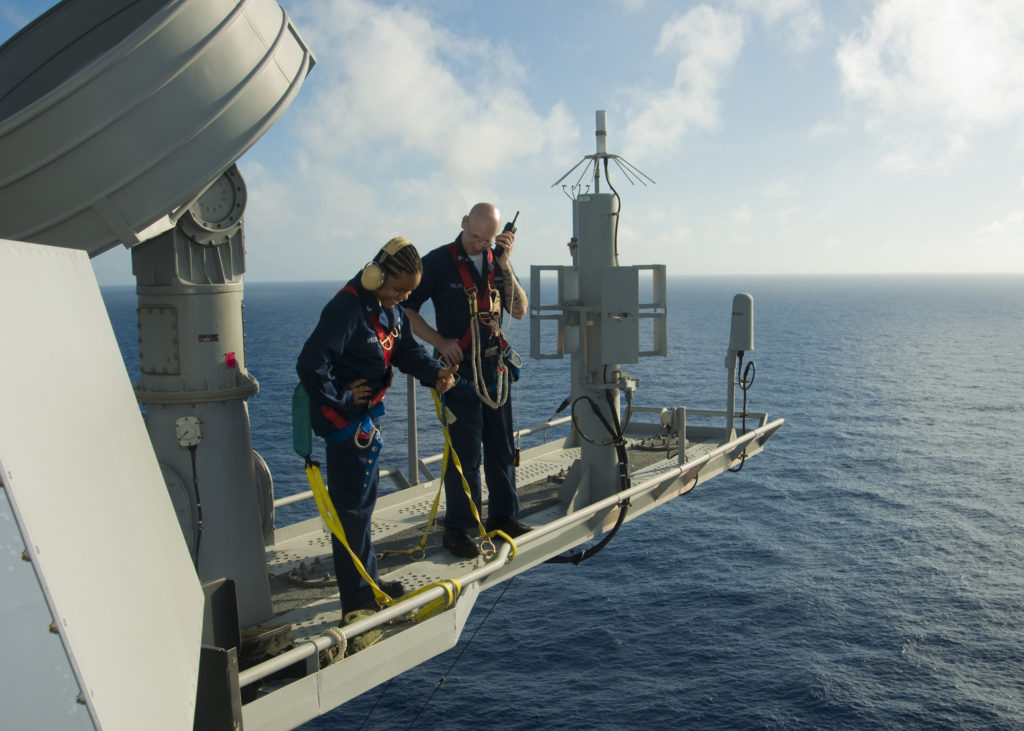
Dubbed Cooperative Engagement Capability (CEC), this integrated air defense system architecture was just being fielded on a Strike Group level for the first time aboard Nimitz and the rest of its flotilla.
At its very basic level, it uses the Strike Group's diverse and powerful surveillance sensors, including the SPY-1 radars on Aegis Combat System-equipped cruisers and destroyers, as well as the E-2C Hawkeye's radar picture from on high, and fuses that information into a common 'picture' via data-links and advanced computer processing. This, in turn, provides very high fidelity 'tracks' of targets thanks to telemetry from various sensors operating at different bands and looking at the same target from different aspects and at different ranges. Whereas a stealthy aircraft or one employing electronic warfare may start to disappear on a cruiser's radar as it is viewing the aircraft from the surface of the Earth and from one angle, it may still be very solid on the E-2 Hawkeye's radar that is orbiting at 25,000 feet and a hundred miles away from the cruiser. With CEC, the target will remain steady on both platform's CEC enabled screens as they are seeing fused data from both sources and likely many others as well.
This is a amazing “quantum leap” in sensing capability and data fidelity that provides information (and all associated data imagining fidelity) at an amazing degree of detail.
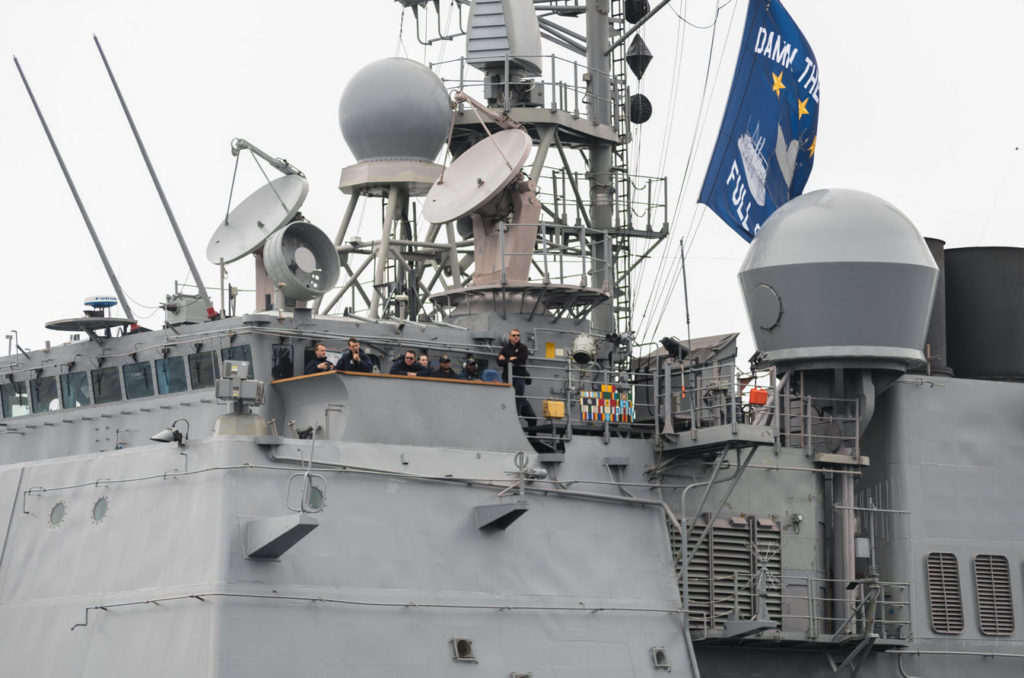
The data-link connectivity and the quality of the enhanced telemetry means that weapons platforms, such as ships and aircraft, could also fire on targets without needing to use their own sensor data.
For instance, a cruiser could fire a missile at a low-flying aircraft that is being tracked by a Hawkeye and an F/A-18 even though it doesn’t show up on their own scopes.
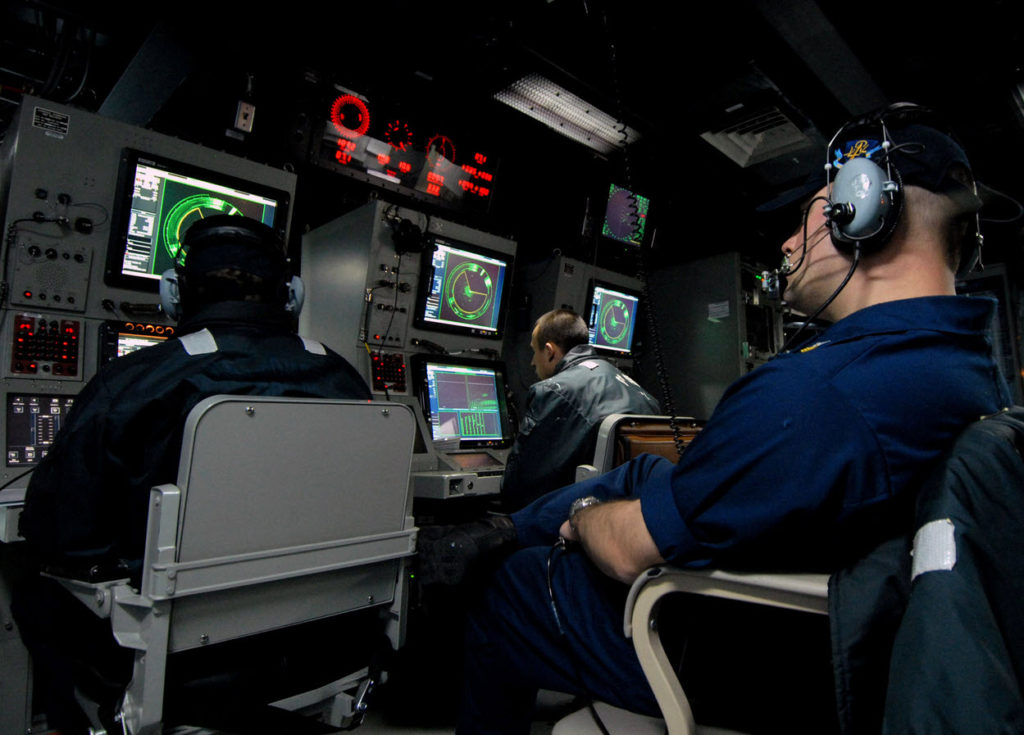
This capability continues to evolve and mature today and will be the linchpin of any peer-state naval battle of the future that the U.S. is involved with.
Now, to keep things in mind, you must take note that back in 2004, it was new and untested. At least on the scale presented by the Nimitz Carrier Strike Group as it churned through the warning areas off the Baja Coast.
The key takeaway here is that if ever there was an opportune time to capture the very best real-world sensor data on a UFO, it was then. At that place. At that time. Under those circumstances. Thus, it did capture data and sensor readings off the scale. It observed and recorded a high-performance target in near lab-like controlled settings offered by the restricted airspace off the Baja Coast, this was it.
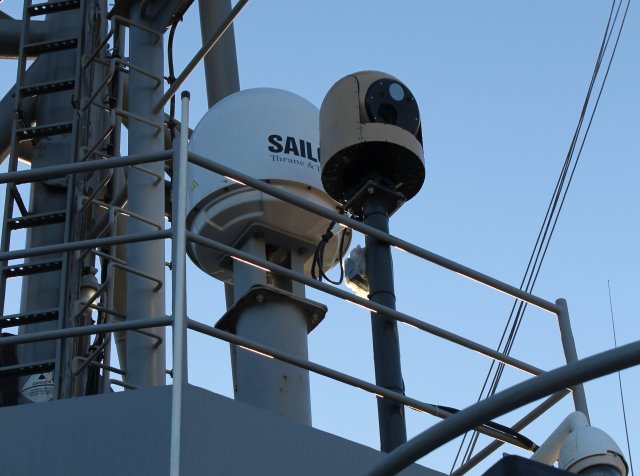
Thus, by intention or chance, this is exactly what happened.
By multiple accounts from vetted first-hand sources, the hard drives that record CEC data from the E-2C Hawkeye and Aegis-equipped ships were seized ( some may say “in a very mysterious fashion”) following the Tic Tac incident.
MAJestic has full authority over extraterrestrial events. So there is really nothing mysterious about it at all.

Uniformed U.S. Air Force officers showed up on these vessels and confiscated the devices and they were never to be seen again. Which is a normal, programmed and standard operating procedure for these events. MAJestic takes over.

This is not rumor or hearsay, this is attested to by multiple uniformed witnesses that were on the vessels that made up the Nimitz Carrier Strike Group at the time. Hundreds of people observed the “Tic Tac” UFO. And hundreds of people watched the information being suppressed right before their very eyes.
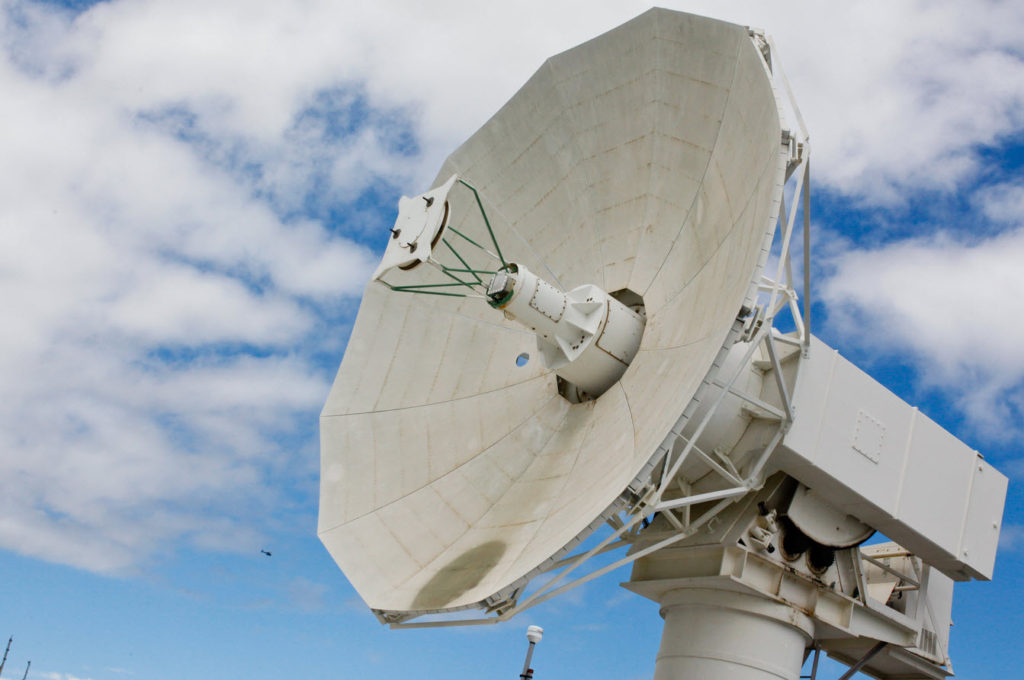
At the same time, on an official level, the Navy seemed to shut down any further investigation into the incident. The aforementioned after-action report states that the Nimitz Carrier Strike Group’s senior intelligence officer, whose name is redacted, alerted the Navy’s 3rd Fleet intelligence officer, or N2, about the incident via secure Email. That same Email, known as a Mission Report (MISREP), included the video footage and other details.
For unexplained reasons, officials at the 3rd Fleet N2 declined to send this report up the chain of command. It went straight from the Senior Intelligence Officer (N2) direct to MAJestic.
The reason might be unexplained to the layman, but all issues of an extraterrestrial nature alerts MAJestic and then everything falls under the MAJIC classification.
They also deleted the MISREP ( Mission Report ), but speculated that paper copy should have been available. However, there is no indication that anyone went looking for this physical copy of the MISREP during the investigation.
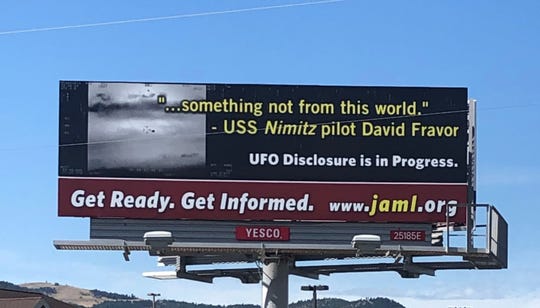
As such there is no official indication that an investigation into the events that week ever occurred.
According to hundreds of witnesses, we do know someone within the military had a very high interest in what went on. As such, after the N2 alert, they wanted the high-fidelity radar data collected from the Strike Group.
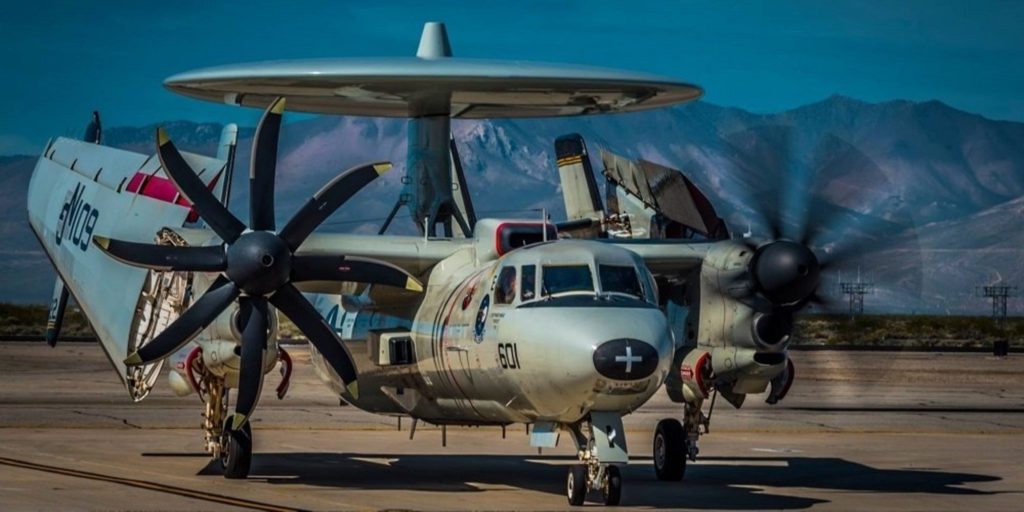
That night in the berthing I asked a very close friend in intel if he could confirm the legitimacy of the film. Without speaking, he gestured that it was correct. So, my skepticism began to fade and that next day a group of individuals were "cod'ed" onto the carrier and they retrieved all the tapes. I can confirm they cod'ed onto the ship, but the seizure of tapes came from people that work in those shops. - https://www.reddit.com/r/UFOs/comme...re_while_on_board_an/?st=JBGR1RZM&sh=51769c5f
Not deleted, seized, potentially for exploitation.
So yeah, someone was highly interested in this event within the DoD. Whether that was because it was of an unexplained nature or part of a test of a very capable secret aerospace program, remains unclear.
Luis Elizondo, the former DoD intelligence officer who headed up the Pentagon’s Advanced Aerospace Threat Identification Program (AATIP) until 2012, is now an investigator with Tom DeLonge’s ‘To The Stars Academy’ and is featured on HISTORY’s new television program (ie: the History Channel), “Unidentified: Inside America’s UFO Investigation”.
It was Elizondo and the ‘To The Stars Academy’ that were integral in bringing to the public the ‘Tic Tac’ UFO Navy cockpit video from 2004, with USS Nimitz-based pilots’ comments that included, “Holy sh*t, what is that?”, and “It’s white. It has no wings. It has no rotors,” and “It didn’t fly like an aircraft. It was so unpredictable.”
When Elizondo ran the DoD’s AATIP, he compiled a list of extraordinary, logic-defying capabilities most commonly associated with unidentified aerial phenomena sightings. Here are Elizondo’s “five observables”:
UAPs’ origins are still officially unknown. Are they a super-top-secret U.S. defense project? Do they hail from Russia? China? Or from even further afield? The only thing we do know is that their capabilities exceed any technologies currently in the U.S. arsenal.
The latter possibility is also very hard for people to come to terms with—that this capability could belong to the U.S. military.
There is no better place to test such a system than against the Nimitz Carrier Strike Group with its CEC abilities during its workup off the Baja Coast.
It is not an operational environment.
According to the report (turn to page 6), a Lt. Col. was doing a Function Test Flight (a test to see if the plane was fully functional after being repaired) when he was asked to go check out an "unidentified airborne contact," along with two other pilots. He was asked if he had any ordnance (weapons) on board, to which he replied no. Officials say this was a strange question; no air controller had ever asked him that when dealing with an unknown contact situation. Soon after, he came close to the coordinates of the unknown object and was told to "skip it" and head back by the controller. Instead, the Lt. Col. decided to go check it out. What he found was a "disturbance" in the water between 50 and 100 meters in diameter that was close to a round shape. It created a large area of frothing white water, and reminded the pilot of "something rapidly submerging from the surface like a submarine or a ship sinking." Soon after, he looked toward the area again and found no trace of the disturbance or any craft near the spot. According to the report, the disturbance may have been caused by an AAV that was 'cloaked' or 'invisible to the human eye.' -Outerplaces
Aircraft are not armed and nobody is expecting a fight.
It is high-level integrated training with crews that have sharpened skills as they prepare for a cruise in which they could very well be called upon to fight for their country.
Those warning areas and range complexes that extend out and down from the Channel Islands off the SoCal coast are among the best space the U.S. military has for training and testing advanced hardware and tactics in a secure and sanitized environment.
In other words, it was an ideal testing environment that featured the very best aerial, surface, and undersea surveillance sensors and sensor crews on the planet.
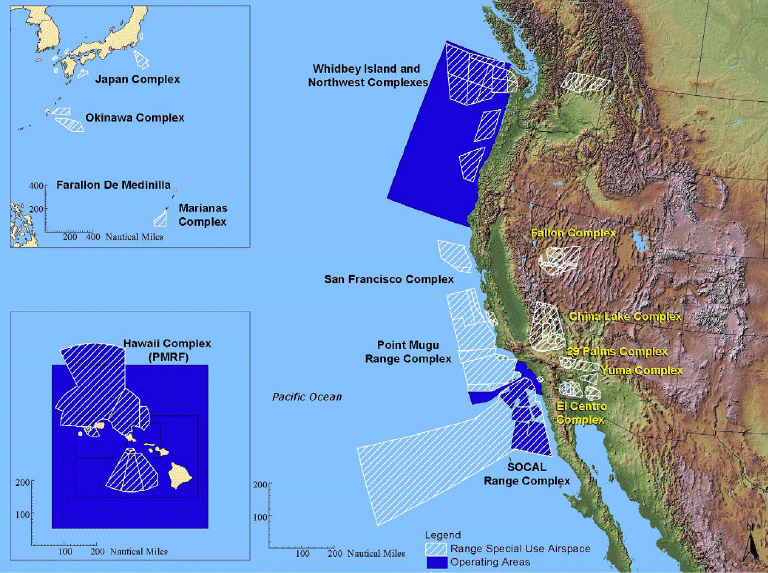
Maybe these are super-secret new technology on evaluation trials, instead of ET trying to buzz our military.
What then?
The fact is that the U.S. government has poured tens of billions of dollars each year into the black budget. It has done so for the better part of a century. Maybe, the argument goes, they developed some amazing technologies that appear to be extraterrestrial in origin. We consider them extraterrestrial as they are so advanced that we cannot possibly associate them with “home grown” technology.
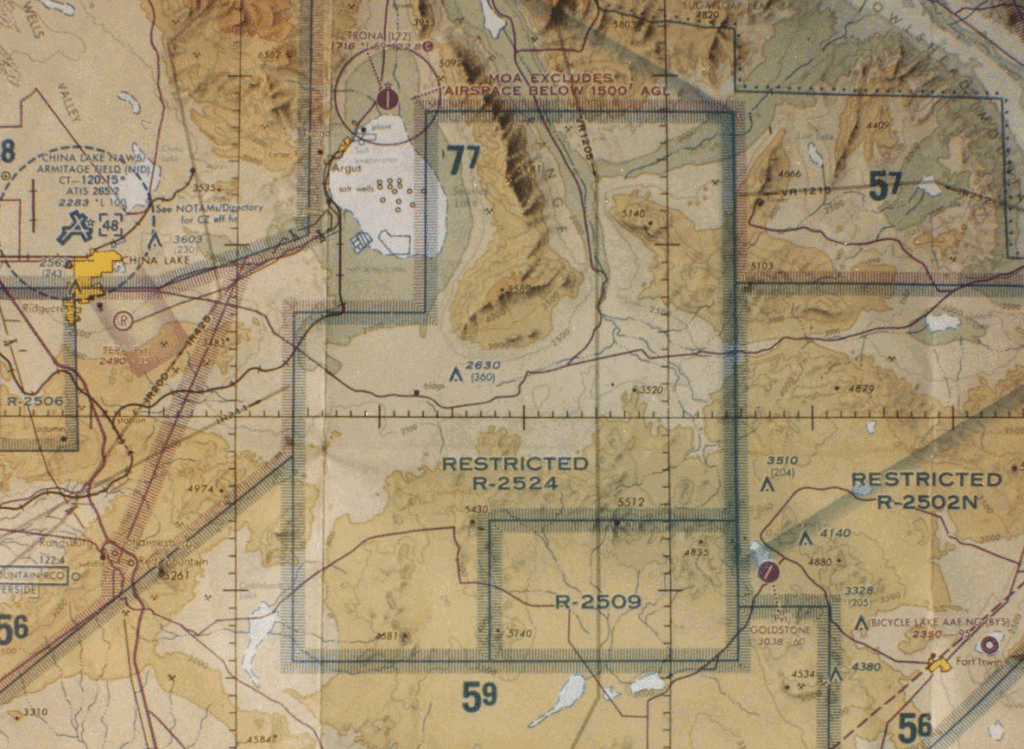
The idea here is that somewhere along the way they got lucky. The argument goes that they made major breakthroughs in highly exotic technologies. And these technologies are so outrageous that difficult to understand that we simply associate them as “impossible” or “from another world”.
"There are some new programs, and there are certain things, some of them 20 or 30 years old, that are still breakthroughs and appropriate to keep quiet about [because] other people don’t have them yet." -Ben Rich
There’s some reason to follow this train of thought. This argument mirrors some cryptic statements in the industry. These were made by top players in the “dark areas” of aerospace development.
Like, for instance, the late Ben Rich.
"Anything you can imagine we already know how to do...." -Ben Rich
Clearly, the ability to defy the limits of traditional propulsion and lift-borne flight would be the pinnacle of aerospace and electrical engineering. It would define new rules. New laws to abide by, and a host of new procedures and disciplines from design, to physical laws, to manufacturing.
"The U. S. Air Force has just given us a contract to take E. T. back home." -Ben Rich
Because of this, it would be far too sensitive to disclose, at least in some people’s eyes within the national security establishment. Though, and I do mean this, how are you going to field the new technology without observation? Eh?
"We also know how to travel to the stars." -Ben Rich
But forget fielding. Let’s get down to “brass tacks”. How about testing. For long, long before anything can be put on the “field”, it needs to be developed, prototyped, and tested. First in sub-assemblies, and then in pilot models.
Indeed, even the risk of testing this technology against known air defense capabilities would have to be weighed against the need for the tightest of secrecy.
"Anything you can imagine we already know how to do." -Ben Rich
But, of course, the CIA, MAJestic and all the rest have done a real “smash up” job on the idea of extraterrestrial life. It is just about impossible for anyone, contemporaneously, to come forth and say that UFO’s exist. They risk a serious backlash from the programmed mindless masses.

This is very true, since UFOs carry such a stigma and have deep pop culture roots in our society, the risk of doing so against an unknowing Carrier Strike Group operating under tight training restrictions seems small and the setting uniquely ideal.
Seems so.

"If you've seen it in Star Trek or Star Wars, we've been there and done that." -Ben Rich
In other words, could the Tic Tac have been ours?
"We have things in the Nevada desert that are alien to your way of thinking far beyond anything you see on Star Trek." -Ben Rich
Yes. It could have been.
Could have.
Listen up.
If this entire sequence is a result of a “black budget” testing of new technologies, then I will need to point out a few points…
We know that whoever that craft belonged to, the information the flotilla collected on it was of great importance to some entity within the DoD.
Naval Air Weapons Station China Lake is a large military installation whose mission is to support the research, testing and evaluation programs of the U.S. Navy. It is part of Navy Region Southwest under Commander, Navy Installations Command. The installation is located in the Western Mojave Desert region of California, approximately 150 miles north of Los Angeles. - Naval Air Weapons Station China Lake - Wikipedia
And the fact that just the radar data was seized makes sense in that the extent of the Nimitz Carrier Strike Group radar network could not be replicated over land during small-scale testing, or via a chance encounters with military aircraft.
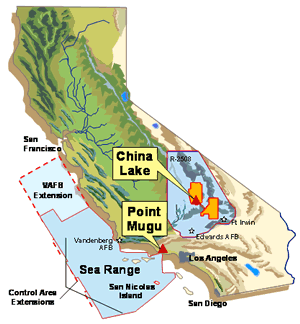
With all this in mind, the idea that the Navy is supposedly just now interested in what its aviators and sailors see when it comes to unexplained craft peculiar and nebulous, to say the least.
One can’t help but feel there are two realities at play within America’s defense apparatus—one that sits on or very near the surface and one that resides deep below it.
Thus…
Whether extraterrestrial-related, or home-grown, an event (known as the “tic toc event” occurred) and was observed. For certain China Lake, and MAJestic were both involved.
Whether extraterrestrial in origin, or “home grown” is all up to speculation.
So why the release now?
Why is the DoD admitting to the observation and study of vehicles that are clearly not of conventional human design? Why now? Why in this venue and in this manner?
If the DoD truly has no idea of what these things are, then it seems absurd that it is just now curious about them. Now, for goodness sakes. After the better part of a century of sightings and major encounters, and denials.
"UFO's are just the imaginings of simpletons. There are no extraterrestrials. The government would tell us."
In fact, we know that isn’t the case historically.
Publicly, the government and the military, has had varying degrees of documented interest in the topic over the years. This includes funded studies, and research. For instance, there is the Advanced Aerospace Threat Identification Program (better known as AATIP), and many others.
One could posit the idea that a government-manufactured (or at least encouraged) information conduit of sorts, is behind this latest admittance by the US Navy.
"It's clearly swamp gas. There is no other reasonable explanation."
This entire arrangement sounds… well… Squirrely.
This, folks, is where the rabbit hole of information and disinformation opens up below us. There is no way around it. We accept it as it is, or we plunge into the abyss. There are no alternatives.
There is the enormous vacuum of verifiable information that the government has created on the matter. That is intentional, and has been in place since the late 1940’s.
Yes. That long.
Now with all the rumor and speculation, one’s truth compass begins to spin crazily, as you dig into these issues.

It is not only about what is real and what is not real. It is fundamentally about what does the government want us to believe and not to believe.
In other words, even if the government wants the truth to come out eventually, it seems alarmingly clear they are going to do it on their own terms, and the timeline for that plan could be measured in decades, not years, or more.
There is a very real reason why the Pentagon would want the idea of UFOs injected back into the public’s consciousness and to add validity to it.
They literally spread disinformation to the public in order to create a wonderfully convenient cover for the myriad clandestine weapon systems in development or operational at the time.
Doing so is in itself a very old chapter in Uncle Sam’s information warfare playbook.
During the Cold War, the government actively lied about UFOs and perpetuated UFO hysteria to cover up its secret aircraft programs.
They literally spread disinformation to the public in order to create a wonderfully convenient cover for the myriad clandestine weapon systems in development or operational at the time.
Now, we are once again back in an age of “great power competition,” according to the Pentagon, and billions of dollars are being pumped into new technologies that were considered exotic themselves just years ago.
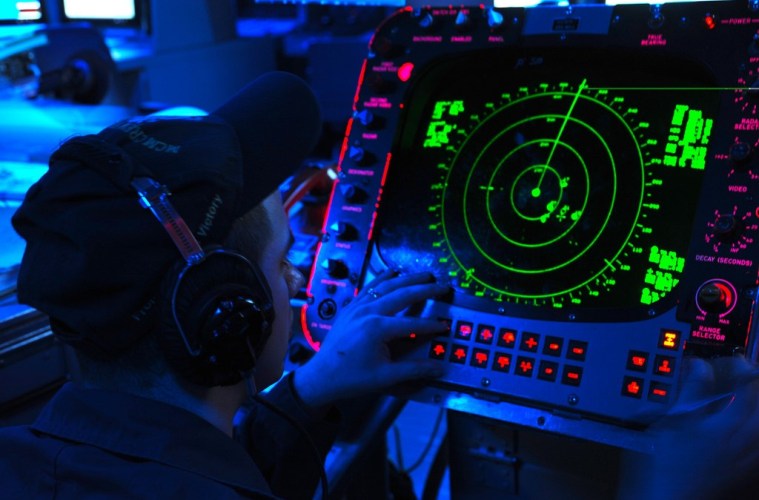
With this in mind, reanimating maybe the best and most broadly self-perpetuating cover story of all time for sightings of clandestine aircraft that people see in the sky seems like a highly logical and proven act.
They literally spread disinformation to the public in order to create a wonderfully convenient cover for the myriad clandestine weapon systems in development or operational at the time.
Reinvigorating the presence of UFOs in the American psyche by adding heaps of validity to the topic on an official level and possibly also on a less than official level (To The Stars Academy for instance) can help keep secret programs that grace the skies just that, secret.
And who knows, that list of programs and technologies could include the very Tic Tac and other bizarrely shaped craft that can defy imagination with their aerial feats that have been spotted and even recorded in recent years.
If the Pentagon really doesn’t know what these things are, then I am a sweet potato. Of course they do. The issue isn’t at all about the situational facts, but how the information can be manipulated for advantage.
If the DoD doesn’t know where they come from, after so many years of sightings and odd encounters and its own studies and shadowy probes, then that would be an unfathomable dereliction of duty.

Certainly, considering they are, after all, tasked with keeping America safe from the foreign harm.
But really, how can we believe the idea that the military has zero opinion on the matter?
It seems like a laughable proposition at best. If there is anything they would have high interest in, it would be craft capable of decimating the enemy on a whim.
With all that being said, what does the Navy’s move to change its procedures and rules in regards to reporting UFOs mean?
It means nothing.
So don’t get your collective hopes up.
These are posts and articles that revolve around how I was recruited for MAJestic and my training. Also discussed is the nature of secret programs. I really do not know why the organization was kept so secret. It really wasn’t because of any kind of military concern, and the technologies were way too involved for any kind of information transfer. The only conclusion that I can come to is that we were obligated to maintain secrecy at the behalf of our extraterrestrial benefactors.


















These particular posts are concerned about the universe that we are all part of. Being entangled as I was, and involved in the crazy things that I was, I was given some insight. This insight wasn’t anything super special. Rather it offered me perception along with advantage. Here, I try to impart some of that knowledge through discussion.
Enjoy.




























Here are posts that have gathered a series of questions from various influencers. They are interesting in many ways and could help all of us unravel the mysteries of the lives that we live.











These posts are related to “reality slides”. Other more common terms are “world-line travel”, or the MWI. What people fail to grasp is that when a person has the ability to slide into a different reality (pass into a different world-line), they are able to “touch” Heaven to some extent. Here are posts that cover this topic.













Another person, collectively known by the identity of “John Titor” claimed to utilize world-line (MWI egress) travel to collect artifacts from the past. He is an interesting subject to discuss. Here we have multiple posts in this regard.
They are;








You’ll not find any big banners or popups here talking about cookies and privacy notices. There are no ads on this site (aside from the hosting ads – a necessary evil). Functionally and fundamentally, I just don’t make money off of this blog. It is NOT monetized. Finally, I don’t track you because I just don’t care to.
"We discovered that if you want to monetise a blog you need to be getting about 100,000 hits a day! " -6F12
This is the full text of the story "R is for Rocket" by Ray Bradbury. It is not only a classic, but it is also a story that held particular meaning to me. For it was how I felt about my dreams to become that mystical "Spacemen". For us, back then, those of us who were "bitten by the bug" of space travel were fixated and driven by the one singular goal... to leave the Earth and explore "Outer Space". I hope that you, the reader, will find this lovely story as wondrous as I have. Please enjoy it, and again, many thanks to the great master Ray Bradbury for composing this masterpiece.
There was this fence where we pressed our faces and felt the wind turn warm and held to the fence and forgot who we were or where we came from but dreamed of who we might be and where we might go. . . .
Yet we were boys and liked being boys and lived in a Florida town and liked the town and went to school and fairly liked the school and climbed trees and played football and liked our mothers and fathers. . . .
But some time every hour of every day of every week for a minute or a second when we thought on fire and stars and the fence beyond which they waited . . . we liked the rockets more.
The fence. The rockets.
Every Saturday morning . . .
The guys met at my house.
With the sun hardly up, they yelled until the neighbors were moved to brandish paralysis guns out their ventilators I commanding the guys to shut up or they’d be frozen statues for the next hour and then where would they be?
Aw, climb a rocket, stick your head in the main-jet! the kids always yelled back, but yelled this safe behind our garden I fence. Old Man Wickard, next door, is a great shot with the para-gun.
This one dim cool Saturday morning I was lying in bed thinking about how I had flunked my semantics exam the day before at formula-school, when I heard the gang yelling below. It was hardly 7 a.m. and there was still a lot of fog roaming in off the Atlantic, and only now were the weather-control vibrators at each corner starting to hum and shoot out rays to get rid of the stuff; I heard them moaning soft and nice.
I padded to the window and stuck my head out.
“Okay, space-pirates! Motors off!”
“Hey!” shouted Ralph Priory. “We just heard, there’s a new schedule today! The Moon Job, the one with the new XL3 motor, is cutting gravity in an hour!”
“Buddha, Muhammad, Allah, and other real and semi-mythological figures,” I said, and went away from the window so fast the concussion laid all the boys out on my lawn.
I zippered myself into a jumper, yanked on my boots, clipped my food-capsules to my hip-pocket, for I knew there’d be no food or even thought of food today, we’d just stuff with pills when our stomachs barked, and fell down the two-story vacuum elevator.
On the lawn, all five of the guys were chewing their lips, bouncing around, scowling.
“Last one,” said I, passing them at 5000 mph, “to the monorail is a bug-eyed Martian!”
On the monorail, with the cylinder hissing us along to Rocket Port, twenty miles from town — a few minutes ride — I had bugs in my stomach. A guy fifteen doesn’t get to see the big stuff often enough, mostly every week it was the small continental cargo rockets coming and going on schedule. But this was big, among the biggest . . . the Moon and beyond. . . .
“I’m sick,” said Priory, and hit me on the arm.
I hit him back. “Me, too. Boy, ain’t Saturday the best day in the week!?”
Priory and I traded wide, understanding grins. We got along all Condition Go. The other pirates were okay. Sid Rossen, Mac Leslyn, Earl Marnee, they knew how to jump around like all the kids, and they loved the rockets, too, but I had the feeling they wouldn’t be doing what Ralph and I would do some day. Ralph and I wanted the stars for each of us, more than we would want a fistful of clear-cut blue-white diamonds.
We yelled with the yellers, we laughed with the laughers, but at the middle of it all, we were still, Ralph and I, and the cylinder whispered to a stop and we were outside yelling, laughing, running, but quiet and almost in slow motion, Ralph ahead of me, and all of us pointed one way, at the observation fence and grabbing hold, yelling for the slowpokes to catch up, but not looking back for them, and then we were all there together and the big rocket came out of its plastic work canopy like a great interstellar circus tent and moved along its gleaming track out toward the fire point, accompanied by the gigantic gantry like a gathering of prehistoric reptile birds which kept and preened and fed this one big fire monster and led it toward its seizure and birth into a suddenly blast-furnace sky.
I quit breathing. I didn’t even suck another breath it seemed until the rocket was way out on the concrete meadow, followed by water-beetle tractors and great cylinders bearing hidden men, and all around, in asbestos suits, praying-mantis mechanics fiddled with machines and buzzed and cawwed and gibbered to each other on invisible, unhearable radiophones, but we could hear it all, in our heads, our minds, our hearts.
“Lord,” I said at last.
“The very good Lord,” said Ralph Priory at my elbow.
The others said this, too, over and over.
It was something to “good Lord” about. It was a hundred years of dreaming all sorted out and chosen and put together Ito make the hardest, prettiest, swiftest dream of all. Every line was fire solidified and made perfect, it was flame frozen, and lice waiting to thaw there in the middle of a concrete prairie, ready to wake with a roar, jump high and knock its silly fine great head against the Milky Way and knock the stars down in a full return of firefall meteors. You felt it could kick the Coal Sack Nebula square in the midriff and make it stand out of the way.
It got me in the midriff, too — it gripped me in such a way I knew the special sickness of longing and envy and grief for lack of accomplishment. And when the astronauts patrolled the field in the final silent mobile-van, my body went with them in their strange white armor, in their bubble-helmets and insouciant pride, looking as if they were team-parading to a magnetic football game at one of the local mag-fields, for mere practice. But they were going to the Moon, they went every month now, and the crowds that used to come to watch were no longer there, there was just us kids to worry them up and worry them off.
“Gosh,” I said. “What wouldn’t I give to go with them. What wouldn’t I give.”
“Me,” said Mac, “I’d give my one-year monorail privileges.”
“Yeah. Oh, very much yeah.”
It was a big feeling for us kids caught half between this morning’s toys and this afternoon’s very real and powerful fireworks.
And then the preliminaries got over with. The fuel was in the rocket and the men ran away from it on the ground like ants running lickety from a metal god — and the Dream woke up and gave a yell and jumped into the sky. And then it was gone, all the vacuum shouting of it, leaving nothing but a hot trembling in the air, through the ground, and up our legs to our hearts. Where it had been was a blazed, seared pock and a fog of rocket smoke like a cumulus cloud banked low.
“It’s gone!” yelled Priory.
And we all began to breathe fast again, frozen there on the ground as if stunned by the passing of a gigantic paralysis gun.
“I want to grow up quick,” I said, then. “I want to grow up quick so I can take that rocket.”
I bit my lips. I was so darned young, and you cannot apply for space work. You have to be chosen. Chosen.
Finally somebody, I guess it was Sidney, said:
“Let’s go to the tele-show now.”
Everyone said yeah, except Priory and myself. We said no, and the other kids went off laughing breathlessly, talking, and left Priory and me there to look at the spot where the ship had been.
It spoiled everything else for us — that takeoff.
Because of it, I flunked my semantics test on Monday.
I didn’t care.
At times like that I thanked Providence for concentrates. When your stomach is nothing but a coiled mass of excitement, you hardly feel like drawing a chair to a full hot dinner. A few concen-tabs swallowed, did wonderfully well as substitution, without the urge of appetite.
I got to thinking about it, tough and hard, all day long and late at night. It got so bad I had to use sleep-massage mechs every night, coupled with some of Tschaikovsky’s quieter music to get my eyes shut.
“Good Lord, young man,” said my teacher, that Monday at class. “If this keeps up I’ll have you reclassified at the next psych-board meeting.”
“I’m sorry,” I replied.
He looked hard at me. “What sort of block have you got? I It must be a very simple, and also a conscious, one.”
I winced. “It’s conscious, sir; but it’s not simple. It’s multi-tentacular. In brief, though — it’s rockets.”
He smiled. “R is for Rocket, eh?”
“I guess that’s it, sir.”
“We can’t let it interfere with your scholastic record, though, young man.”
“Do you think I need hypnotic suggestion, sir?”
“No, no.” He flipped through a small tab of records with my name blocked on it. I had a funny stone in my stomach, just lying there. He looked at me. “You know, Christopher, you’re king-of-the-hill here; head of the class.” He closed his eyes and mused over it. “We’ll have to see about a lot of other things,” he concluded. Then he patted me on the shoulder.
“Well — get on with your work. Nothing to worry about.”
He walked away.
I tried to get back to work, but I couldn’t. During the rest of the day the teacher kept watching me and looking at my tab-record and chewing his lip. About two in the afternoon he dialed a number on his desk-audio and discussed something with somebody for about five minutes.
I couldn’t hear what was said.
But when he set the audio into its cradle, he stared straight at me with the funniest light in his eyes.
It was envy and admiration and pity all in one. It was a little sad and it was much of happiness. It had a lot in it, just in his eyes. The rest of his face said nothing.
It made me feel like a saint and a devil sitting there.
Ralph Priory and I slid home from formula-school together early that afternoon. I told Ralph what had happened and he frowned in the dark way he always frowns.
I began to worry. And between the two of us we doubled and tripled the worry.
“You don’t think you’ll be sent away, do you, Chris?”
Our monorail car hissed. We stopped at our station. We got out. We walked slow. “I don’t know,” I said.
“That would be plain dirty,” said Ralph.
“Maybe I need a good psychiatric laundering, Ralph. I can’t go on flubbing my studies this way.”
We stopped outside my house and looked at the sky for a long moment. Ralph said something funny.
“The stars aren’t out in the daytime, but we can see ’em, can’t we, Chris?”
“Yeah,” I said. “Darn rights.”
“Well stick it together, huh, Chris? Blast them, they can’t take you away now. We’re pals. It wouldn’t be fair.”
I didn’t say anything because there was no room in my throat for anything but a hectagonal lump.
“What’s the matter with your eyes?” asked Priory.
“Aw, I looked at the sun too long. Come on inside, Ralph.”
We yelled under the shower spray in the bath-cubicle, but our yells weren’t especially convincing, even when we turned on the ice-water.
While we were standing in the warm-air dryer, I did a lot of thinking. Literature, I figured, was full of people who fought battles against hard, razor-edged opponents. They pitted brain and muscle against obstacles until they won out or were themselves defeated. But here I was with hardly a sign of any outward conflict. It was all running around in spiked boots inside my head, making cuts and bruises where no one could see them except me and a psychologist. But it was just as bad.
“Ralph,” I said, as we dressed, “I got a war on.”
“All by yourself?” he asked.
“I can’t include you,” I said. “Because this is personal. How many times has my mother said, ‘Don’t eat so much, Chris, your eyes are bigger than your stomach?'”
“A million times.”
“Two million. Well, paraphrase it, Ralph. Change it to ‘Don’t see so much, Chris, your mind is too big for your body.’ I got a war on between a mind that wants things my body can’t give it.”
Priory nodded quietly. “I see what you mean about its being a personal war. In that case, Christopher, I’m at war, too.”
“I knew you were,” I said. “Somehow I think the other kids’ll grow out of it. But I don’t think we will, Ralph. I think we’ll keep waiting.”
We sat down in the middle of the sunlit upper deck of the house, and started checking over some homework on our formula-pads. Priory couldn’t get his. Neither could I. Priory put into words the very thing I didn’t dare say out loud.
“Chris, the Astronaut Board selects. You can’t apply for it. You wait.”
“I know.”
“You wait from the time you’re old enough to turn cold in the stomach when you see a Moon rocket, until all the years go by, and every month that passes you hope that one morning a blue Astronaut helicopter will come down out of the sky, land on your lawn, and that a neat-looking engineer will ease out, walk up the rampway briskly, and touch the bell.
“You keep waiting for that helicopter until you’re twenty-one. And then, on the last day of your twentieth year you drink and laugh a lot and say what the heck, you didn’t really care about it, anyway.”
We both just sat there, deep in the middle of his words. We both just sat there. Then:
“I don’t want that disappointment, Chris. I’m fifteen, just like you. But if I reach my twenty-first year without an Astronaut ringing the bell where I live at the ortho-station, I — “
“I know,” I said. “I know. I’ve talked to men who’ve waited, all for nothing. And if it happens that way to us, Ralph, well — we’ll get good and drunk together and then go out and take jobs loading cargo on a Europe-bound freighter.”
Ralph stiffened and his face went pale. “Loading cargo.”
There was a soft, quick step on the ramp and my mother was there. I smiled. “Hi, lady!”
“Hello. Hello, Ralph.”
“Hello, Jhene.”
She didn’t look much older than twenty-five, in spite of having birthed and raised me and worked at the Government Statistics House. She was light and graceful and smiled a lot, and I could see how father must have loved her very much when he was alive. One parent is better than none. Poor Priory, now, raised in one of those orthopedical stations. . . .
Jhene walked over and put her hand on Ralph’s face. “You look ill,” she said. “What’s wrong?”
Ralph managed a fairly good smile. “Nothing — at all.”
Jhene didn’t need prompting. She said, “You can stay here I tonight, Priory. We want you. Don’t we, Chris?”
“Heck, yes.”
“I should get back to the station,” said Ralph, rather feebly, I observed. “But since you asked and Chris here needs help on his semantics for tomorrow, I’ll stick and help him.”
“Very generous,” I observed.
“First, though, I’ve a few errands. I’ll take the ‘rail and be back in an hour, people.”
When Ralph was gone my mother looked at me intently, then brushed my hair back with a nice little move of her fingers.
“Something’s happening, Chris.”
My heart stopped talking because it didn’t want to talk any more for a while. It waited.
I opened my mouth, but Jhene went on:
“Something’s up somewhere. I had two calls at work today. One from your teacher. One from — I can’t say. I don’t want to say until things happen — “
My heart started talking again, slow and warm.
“Don’t tell me, then, Jhene. Those calls — “
She just looked at me. She took my hand between her two soft warm ones. “You’re so young, Chris. You’re so awfully young.”
I didn’t speak.
Her eyes brightened. “You never knew your father. I wish you had. You know what he was, Chris?”
I said, “Yeah. He worked in a Chemistry Lab, deep underground most of the time.”
And, my mother added, strangely, “He worked deep under the ground, Chris, and never saw the stars.”
My heart yelled in my chest. Yelled loud and hard.
“Oh, Mother. Mother — “
It was the first time in years I had called her mother.
When I woke the next morning there was a lot of sunlight in the room, but the cushion where Priory slept when he stayed over, was vacant. I listened. I didn’t hear him splashing in the shower-cube, and the dryer wasn’t humming. He was gone.
I found his note pinned on the sliding door.
“See you at formula at noon. Your mother wanted me to do some work for her. She got a call this morning, and said she needed me to help. So long. Priory.”
Priory out running errands for Jhene. Strange. A call in the early morning to Jhene. I went back and sat down on the cushion.
While I was sitting there a bunch of the kids yelled down on the lawn-court. “Hey, Chris! You’re late!”
I stuck my head out the window. “Be right down!”
“No, Chris.”
My mother’s voice. It was quiet and it had something funny in it. I turned around. She was standing in the doorway behind me, her face pale, drawn, full of some small pain. “No, Chris,” she said again, softly. “Tell them to go on to formula without you — today.”
The kids were still making noise downstairs, I guess, but I didn’t hear them. I just felt myself and my mother, slim and pale and restrained in my room. Far off, the weather-control vibrators started to hum and throb.
I turned slowly and looked down at the kids. The three of them were looking up, lips parted casually, half-smiling, semantic-tabs in their knotty fingers. “Hey — ” one of them said. Sidney, it was.
“Sorry, Sid. Sorry, gang. Go on without me. I can’t go to formula today. See you later, huh?”
“Aw, Chris!”
“Sick?”
“No. Just — Just go on without me, gang. I’ll see you.”
I felt numb. I turned away from their upturned, questioning faces and glanced at the door. Mother wasn’t there. She had gone downstairs, quietly. I heard the kids moving off, not quite as boisterously, toward the monorail station.
Instead of using the vac-elevator, I walked slowly downstairs. “Jhene,” I said, “where’s Ralph?”
Jhene pretended to be interested in combing her long light hair with a vibro-toothed comb. “I sent him off. I didn’t want him here this morning.”
“Why am I staying home from formula, Jhene?”
“Chris, please don’t ask.”
Before I could say anything else, there was a sound in the air. It cut through the very soundproofed wall of the house, and hummed in my marrow, quick and high as an arrow of glittering music.
I swallowed. All the fear and uncertainty and doubt went away, instantly.
When I heard that note, I thought of Ralph Priory. Oh Ralph, if you could be here now. I couldn’t believe the truth of it. Hearing that note and hearing it with my whole body and soul as well as with my ears.
It came closer, that sound. I was afraid it would go away. But it didn’t go away. It lowered its pitch and came down outside the house in great whirling petals of light and shadow and I knew it was a helicopter the color of the sky. It stopped humming, and in the silence my mother tensed forward, dropped the vibro-comb and took in her breath.
In that silence, too, I heard booted footsteps walking up the ramp below. Footsteps that I had waited for a long time.
Footsteps I was afraid would never come.
Somebody touched the bell.
And I knew who it was.
And all I could think was, Ralph, why in heck did you have to go away now, when all this is happening? Blast it, Ralph, why did you?
The man looked as if he had been born in his uniform. It fitted like a second layer of salt-colored skin, touched here and there with a line, a dot of blue. As simple and perfect a uniform as could be made, but with all the muscled power of the universe behind it.
His name was Trent. He spoke firmly, with a natural round perfection, directly to the subject.
I stood there, and my mother was on the far side of the room, looking like a bewildered little girl. I stood listening.
Out of all the talking I remember some of the snatches:
“. . . highest grades, high IQ. Perception A-1, curiosity Triple-A. Enthusiasm necessary to the long, eight-year educational grind. . . .”
“Yes, sir.”
“. . . talks with your semantics and psychology teachers — “
“Yes, sir.”
“. . . and don’t forget, Mr. Christopher . . .”
Mister Christopher!
“. . . and don’t forget, Mr. Christopher, nobody is to know you have been selected by the Astronaut Board.”
“No one?”
“Your mother and teacher know, naturally. But no other person must know. Is that perfectly understood?”
“Yes, sir.”
Trent smiled quietly, standing there with his big hands at his sides. “You want to ask why, don’t you? Why you can’t tell your friends? I’ll explain.
“It’s a form of psychological protection. We select about ten thousand young men each year from the earth’s billions. Out of that number three thousand wind up, eight years later, as spacemen of one sort or another. The others must return to society. They’ve flunked out, but there’s no reason for everyone to know. They usually flunk out, if they’re going to flunk, in the first six months. And it’s tough to go back and face your friends and say you couldn’t make the grade at the biggest job in the world. So we make it easy to go back.
“But there’s still another reason. It’s psychological, too. Half the fun of being a kid is being able to lord it over the other guys, by being superior in some way. We take half the fun out of Astronaut selection by strictly forbidding you to tell your pals. Then, we’ll know if you wanted to go into space for frivolous reasons, or for space itself. If you’re in it for personal conceit — you’re damned.
If you’re in it because you can’t help being in it and have to be in it — you’re blessed.”
He nodded to my mother. “Thank you, Mrs. Christopher.”
“Sir,” I said. “A question. I have a friend. Ralph Priory. He lives at an ortho-station — “
Trent nodded. “I can’t tell you his rating, of course, but he’s on our list. He’s your buddy? You want him along, of course. I’ll check his record. Station-bred, you say? That’s not good. But — we’ll see.”
“If you would, please, thanks.”
“Report to me at the Rocket Station Saturday afternoon at five, Mr. Christopher. Meantime: silence.”
He saluted. He walked off. He went away in the helicopter into the sky, and Mother was beside me quickly, saying, “Oh, Chris, Chris,” over and over, and we held to each other and whispered and talked and she said many things, how good this was going to be for us, but especially for me, how fine, what an honor it was, like the old old days when men fasted and took vows and joined churches and stopped up their tongues and were silent and prayed to be worthy and to live well as monks and priests of many churches in far places, and came forth and moved in the world and lived as examples and taught well. It was no different now, this was a greater priesthood, in a way, she said, she inferred, she knew, and I was to be some small part of it, I would not be hers any more, I would belong to all the worlds, I would be all the things my father wanted to be and never lived or had a chance to be. . . .
“Darn rights, darn rights,” I murmured. “I will, I promise I will . . .”
I caught my voice. “Jhene — how — how will we tell Ralph? What about him?”
“You’re going away, that’s all, Chris. Tell him that. Very simply. Tell him no more. He’ll understand.”
“But, Jhene, you —”
She smiled softly. “Yes, I’ll be lonely, Chris. But I’ll have my work and I’ll have Ralph.”
“You mean . . .”
“I’m taking him from the ortho-station. He’ll live here, when you’re gone. That’s what you wanted me to say, isn’t it, Chris?”
I nodded, all paralyzed and strange inside.
“That’s exactly what I wanted you to say.”
“He’ll be a good son, Chris. Almost as good as you.”
“He’ll be fine!”
We told Ralph Priory. How I was going away maybe to school in Europe for a year and how Mother wanted him to come live as her son, now, until such time as I came back. We said it quick and fast, as if it burned our tongues. And when we finished, Ralph came and shook my hand and kissed my mother on the cheek and he said:
“I’ll be proud. I’ll be very proud.”
It was funny, but Ralph didn’t even ask any more about why I was going, or where, or how long I would be away. All he would say was, “We had a lot of fun, didn’t we?” and let it go at that, as if he didn’t dare say any more.
It was Friday night, after a concert at the amphitheater in the center of our public circle, and Priory and Jhene and I came home, laughing, ready to go to bed.
I hadn’t packed anything. Priory noted this briefly, and let it go. All of my personal supplies for the next eight years would be supplied by someone else. No need for packing.
My semantics teacher called on the audio, smiling and saying a very brief, pleasant good-bye.
Then, we went to bed, and I kept thinking in the hour before I lolled off, about how this was the last night with Jhene and Ralph. The very last night.
Only a kid of fifteen — me.
And then, in the darkness, just before I went to sleep, Priory twisted softly on his cushion, turned his solemn face to me, and whispered, “Chris?” A pause. “Chris. You still awake?” It was like a faint echo.
“Yes,” I said.
“Thinking?”
A pause.
“Yes.”
He said, “You’re — You’re not waiting any more, are you, Chris?”
I knew what he meant. I couldn’t answer.
I said, “I’m awfully tired, Ralph.”
He twisted back and settled down and said, “That’s what I thought. You’re not waiting any more. Gosh, but that’s good, Chris. That’s good.”
He reached out and punched me in the arm-muscle, lightly.
Then we both went to sleep.
It was Saturday morning. The kids were yelling outside. Their voices filled the seven o’clock fog. I heard Old Man Wickard’s ventilator flip open and the zip of his para-gun, playfully touching around the kids.
“Shut up!” I heard him cry, but he didn’t sound grouchy. It was a regular Saturday game with him. And I heard the kids giggle.
Priory woke up and said, “Shall I tell them, Chris, you’re not going with them today?”
“Tell them nothing of the sort.” Jhene moved from the door. She bent out the window, her hair all light against a ribbon of fog. “Hi, gang! Ralph and Chris will be right down. Hold gravity!”
“Jhene!” I cried.
She came over to both of us. “You’re going to spend your Saturday the way you always spend it — with the gang!”
“I planned on sticking with you, Jhene.”
“What sort of holiday would that be, now?”
She ran us through our breakfast, kissed us on the cheeks, and forced us out the door into the gang’s arms.
“Let’s not go out to the Rocket Port today, guys.”
“Aw, Chris — why not?”
Their faces did a lot of changes. This was the first time in history I hadn’t wanted to go. “You’re kidding, Chris.”
“Sure he is.”
“No, he’s not. He means it,” said Priory. “And I don’t want to go either. We go every Saturday. It gets tiresome. We can go next week instead.”
“Aw . . .”
They didn’t like it, but they didn’t go off by themselves. It was no fun, they said, without us.
“What the heck— we’ll go next week.”
“Sure we will. What do you want to do, Chris?”
I told them.
We spent the morning playing Kick the Can and some games we’d given up a long time ago, and we hiked out along some old rusty and abandoned railroad tracks and walked in a small woods outside town and photographed some birds and went swimming raw, and all the time I kept thinking — this is the last day.
We did everything we had ever done before on Saturday. All the silly crazy things, and nobody knew I was going away except Ralph, and five o’clock kept getting nearer and nearer.
At four, I said good-bye to the kids.
“Leaving so soon, Chris? What about tonight?”
“Call for me at eight,” I said. “We’ll go see the new Sally Gibberts picturel”
“Swell.”
“Cut gravity!”
And Ralph and I went home.
Mother wasn’t there, but she had left part of herself, her smile and her voice and her words on a spool of audio-film on my bed. I inserted it in the viewer and threw the picture on the wall. Soft yellow hair, her white face and her quiet words:
“I hate good-byes, Chris. I’ve gone to the laboratory to do some extra work. Good luck. All of my love. When I see you again — you’ll be a man.”
That was all.
Priory waited outside while I saw it over four times. “I hate good-byes, Chris. I’ve gone . . . work. . . . luck. All . . . my love. . . .”
I had made a film-spool myself the night before. I spotted it in the viewer and left it there. It only said good-bye.
Priory walked halfway with me. I wouldn’t let him get on the Rocket Port monorail with me. I
just shook his hand, tight, and said, “It was fun today, Ralph.”
“Yeah. Well, see you next Saturday, huh, Chris?”
“I wish I could say yes.”
“Say yes anyway. Next Saturday — the woods, the gang, the rockets, and Old Man Wickard and his trusty para-gun.”
We laughed. “Sure. Next Saturday, early. Take — Take care of our mother, will you, Priory?”
“That’s a silly question, you nut,” he said.
“It is, isn’t it?”
He swallowed. “Chris.”
“Yeah?”
“I’ll be waiting. Just like you waited and don’t have to wait any more. I’ll wait.”
“Maybe it won’t be long, Priory. I hope not.”
I jabbed him, once, in the arm. He jabbed back.
The monorail door sealed. The car hurled itself away, and Priory was left behind.
I stepped out at the Port. It was a five-hundred-yard walk down to the Administration building. It took me ten years to walk it.
“Next time I see you you’ll be a man — “
“Don’t tell anybody — “
“I’ll wait, Chris — “
It was all choked in my heart and it wouldn’t go away and it swam around in my eyes.
I thought about my dreams. The Moon Rocket. It won’t be part of me, part of my dream any longer. I’ll be part of it.
I felt small there, walking, walking, walking.
The afternoon rocket to London was just taking off as I went down the ramp to the office. It shivered the ground and it shivered and thrilled my heart.
I was beginning to grow up awfully fast.
I stood watching the rocket until someone snapped their heels, cracked me a quick salute.
I was numb.
“C. M. Christopher?”
“Yes, sir. Reporting, sir.”
“This way, Christopher. Through that gate.”
Through that gate and beyond the fence . . .
This fence where we had pressed our faces and felt the wind turn warm and held to the fence and forgot who we were or where we came from but dreamed of who we might be and where we might go . . .
This fence where had stood the boys who liked being boys who lived in a town and liked the town
and fairly liked school and liked football and liked their fathers and mothers . . .
The boys who some time every hour of every day of every week thought on fire and stars and the fence beyond which they waited. . . . The boys who liked the rockets more.
Mother, Ralph, I’ll see you. I’ll be back.
Mother!
Ralph!
And, walking, I went beyond the fence.
The End
What an absolutely wonderful story. It means a lot to me. And people, that's exactly how it was like for me to leave university as an Aerospace Engineer and enter NAS, NASC Pensacola Florida as an AOCS Aviation Office Candidate. I well remember arrival at the airport and proceeding to the lobby where there was this enormously huge arrow pointing to this ridiculously tiny phone set in the wall. Telling me to pick up the phone and call the base.
This is an index of full text reprints of stories that I have read that influenced me when I was young. They are rather difficult to come by today, as where I live they are nearly impossible to find. Yes, you can find them on the internet, behind paywalls. Ah, that’s why all those software engineers in California make all that money. Well, here they are FOR FREE. Enjoy reading them.
Here are some movies that I consider noteworthy and worth a view. Enjoy.




Here are reprints in full text of stories that inspired me, but that are nearly impossible to find in China. I place them here as sort of a personal library that I can use for inspiration. The reader is welcome to come and enjoy a read or two as well.







































You’ll not find any big banners or popups here talking about cookies and privacy notices. There are no ads on this site (aside from the hosting ads – a necessary evil). Functionally and fundamentally, I just don’t make money off of this blog. It is NOT monetized. Finally, I don’t track you because I just don’t care to.